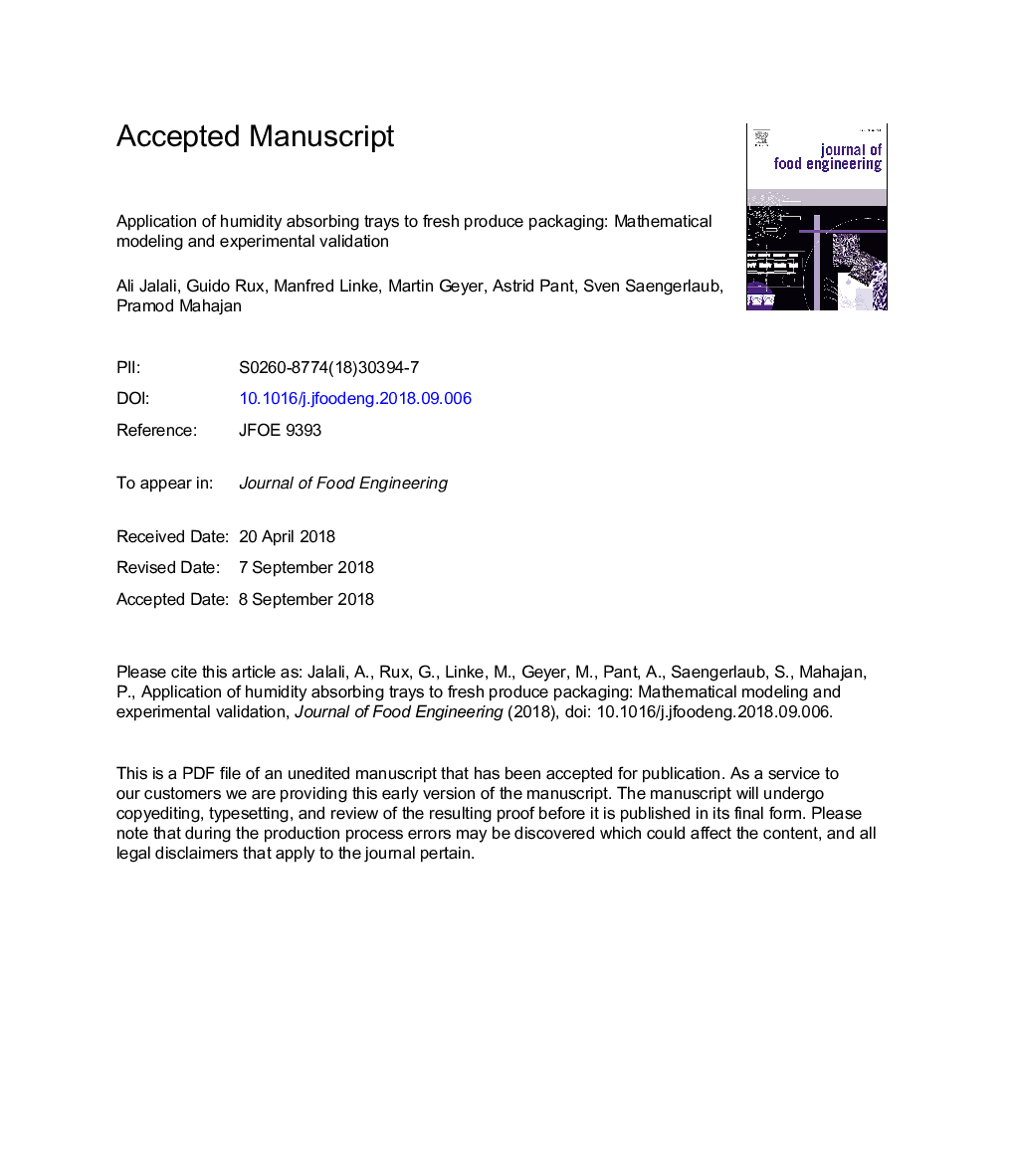| کد مقاله | کد نشریه | سال انتشار | مقاله انگلیسی | نسخه تمام متن |
|---|---|---|---|---|
| 11024359 | 1701162 | 2019 | 27 صفحه PDF | دانلود رایگان |
عنوان انگلیسی مقاله ISI
Application of humidity absorbing trays to fresh produce packaging: Mathematical modeling and experimental validation
ترجمه فارسی عنوان
استفاده از سینی جذب رطوبت به بسته بندی های تازه: مدل سازی ریاضی و اعتبار سنجی تجربی
دانلود مقاله + سفارش ترجمه
دانلود مقاله ISI انگلیسی
رایگان برای ایرانیان
کلمات کلیدی
موضوعات مرتبط
مهندسی و علوم پایه
مهندسی شیمی
مهندسی شیمی (عمومی)
چکیده انگلیسی
Humidity control is one of the biggest challenges in modified atmosphere and humidity packaging (MAHP) of fresh horticultural products, especially those of high transpiration rate. Humidity absorbing trays containing active moisture absorber substance in the structure have been recently emerged as a potential solution in this area. Here packaging of strawberries using two different humidity absorbing trays of different moisture absorption capacity named T0 and T12, under fluctuating ambient conditions was simulated using an integrated mathematical modeling approach and validated experimentally. The model considered transpiration and respiration behavior of fresh produce, moisture absorption by packaging tray, gas and water vapor permeation through the perforated packaging film to predict changes in relative humidity of packaging headspace as well as moisture condensation within the package. Based on RMSE values, there was a good agreement between predicted and measured data of humidity, moisture loss, absorption and condensation inside the package. The RMSE values for prediction of the headspace humidity were 1.28, 2.38 and 4.34 and corresponding R2 values were 0.71, 0.86 and 0.87 for control, T0 and T12 packages, respectively. Further simulations were made to design MAHP for strawberry using T12 tray and appropriate number of perforations in packaging film under different conditions of fruit mass and ambient temperature. For example, using 1 perforation of 0.8â¯mm diameter for 6 days storage of a 400â¯g strawberry package under 15â¯Â°C ambient temperature, resulted in desired gas composition of O2 (7.0%) and CO2 (12.6%), while preventing humidity saturation and consequent moisture condensation by keeping in-package equilibrium humidity at 97.6% and maintaining fruit mass loss less than 0.3%.
ناشر
Database: Elsevier - ScienceDirect (ساینس دایرکت)
Journal: Journal of Food Engineering - Volume 244, March 2019, Pages 115-125
Journal: Journal of Food Engineering - Volume 244, March 2019, Pages 115-125
نویسندگان
Ali Jalali, Guido Rux, Manfred Linke, Martin Geyer, Astrid Pant, Sven Saengerlaub, Pramod Mahajan,
